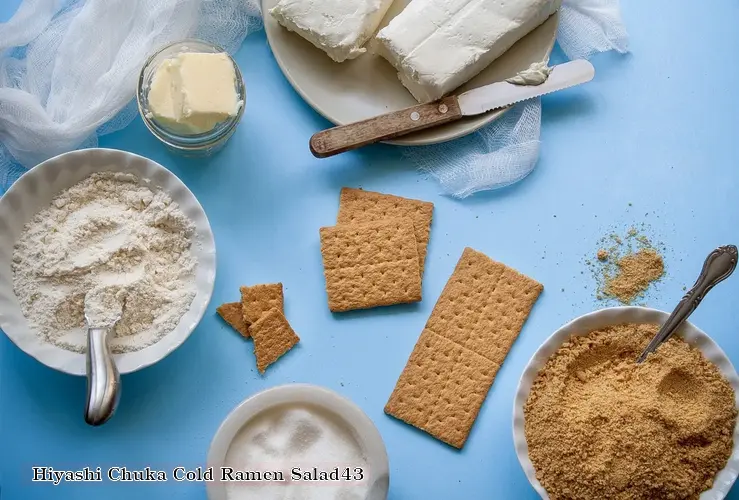

History of Hiyashi Chuka
-----------------------
Hiyashi Chuka has a rich history that dates back to the Meiji period in Japan, around the late 19th century. It is believed that a Chinese immigrant named Lee Chiu, who owned a restaurant in Yokohama, created the dish as a way to use up leftover noodles. He mixed the noodles with various ingredients, such as vegetables, meat, and sauces, and served it cold. The dish quickly gained popularity and spread throughout Japan, with different regions developing their own unique variations.
Ingredients Used in Hiyashi Chuka
-------------------------------
Hiyashi Chuka typically consists of the following ingredients:
1. Ramen noodles (preferably leftover or day-old)
2. Meat (usually pork, beef, or chicken)
3. Vegetables (such as bean sprouts, sliced cucumber, shredded carrots, diced bell peppers, and green onions)
4. Egg (usually boiled or shirred)
5. Pickled ginger ( Optional)
6. Sesame seeds
7. Seasonings (such as soy sauce, sake, mirin, and sugar)
How to Make Hiyashi Chuka at Home
---------------------------------
Making Hiyashi Chuka is relatively easy and straightforward. Here's a basic recipe you can follow:
1. Prepare the ingredients: Cook the ramen noodles according to the package instructions. Slice the meat, hard-boil the egg, and chop the vegetables into bite-sized pieces.
2. Mix the sauce: In a small bowl, combine soy sauce, sake, mirin, and sugar. Whisk the mixture until the sugar dissolves.
3. Assemble the salad: In a large bowl, combine the cooked ramen noodles, sliced meat, chopped vegetables, pickled ginger (if using), and hard-boiled egg.
4. Drizzle the dressing: Pour the sauce mixture over the salad and toss gently to coat.
5. Sprinkle toppings (optional): Sprinkle sesame seeds and green onions on top of the salad for garnish.
6. Chill and serve: Cover the bowl with plastic wrap and refrigerate for at least 30 minutes to allow the flavors to meld together. Serve cold.
Variations and Regional Differences
-------------------------------------
Hiyashi Chuka has many variations throughout Japan, with different regions adding their unique twists to the dish. Here are some examples:
1. Tokyo-style: In Tokyo, Hiyashi Chuka often includes mentaiko (spicy pollock roe) and aburaage (deep-fried tofu) as toppings.
2. Osaka-style: In Osaka, they add ingredients such as takuan no moto (pickled yellow daikon), shrimp, and mentaiko.
3. Hakata-style (Fukuoka): In Fukuoka, Hiyashi Chuka is flavored with tonkotsu (pork bone broth) and topped with corn, butter, and mentaiko.
4. Sapporo-style: In Sapporo, they add crab meat, shrimp, and vegetables like shirataki noodles, and serve it with a miso-based dressing.
Conclusion
----------
Hiyashi Chuka is a delicious and refreshing dish that is perfect for hot summer days. With its rich history and countless variations, it's no wonder it's a beloved meal throughout Japan. Whether you're in Tokyo, Osaka, Fukuoka, or Sapporo, be sure to try the local version of Hiyashi Chuka and experience the unique flavors of this popular dish.
DISCLAIMER: This information is provided for general informational purposes only, and publication does not constitute an endorsement. Kwick365 does not warrant the accuracy or completeness of any information, text, graphics, links, or other items contained within this content. Kwick365 does not guarantee you will achieve any specific results if you follow any advice herein. It may be advisable for you to consult with a professional such as a lawyer, accountant, or business advisor for advice specific to your situation.
today
Copyright © 2025 KwickEAT.com
Designed by KwickPOS is the best restaurant POS